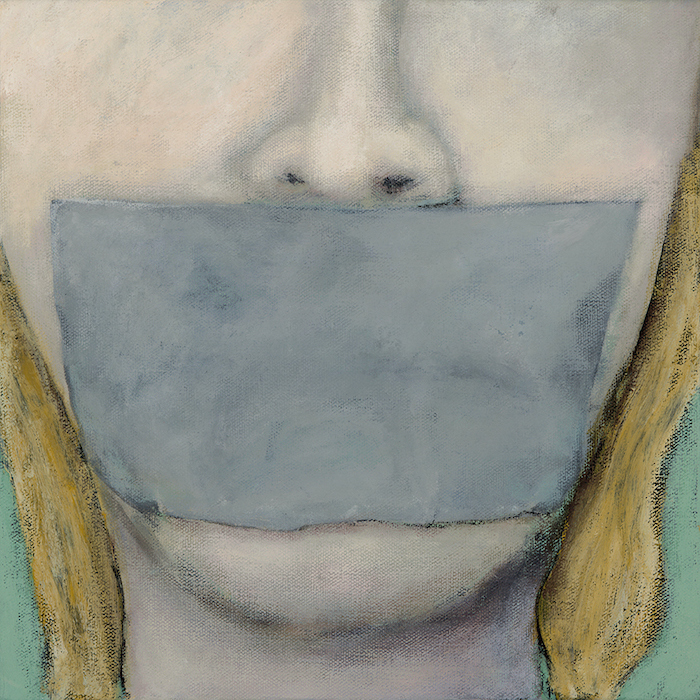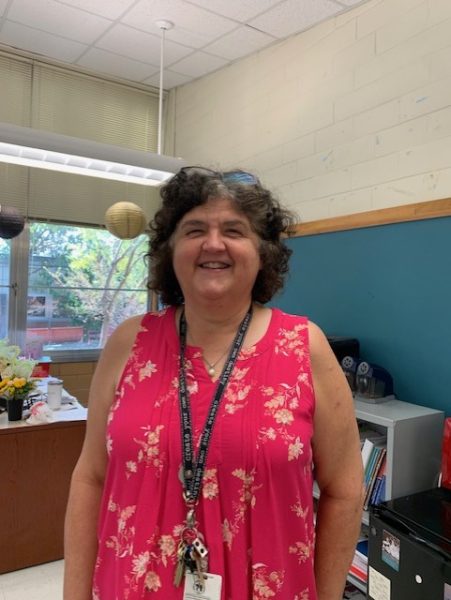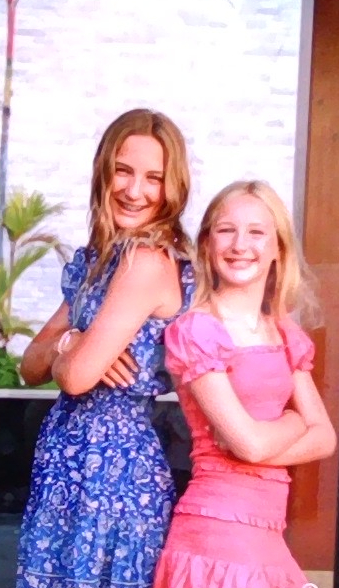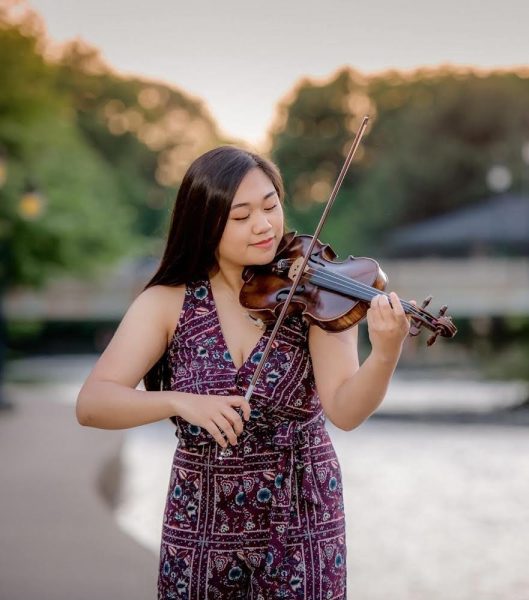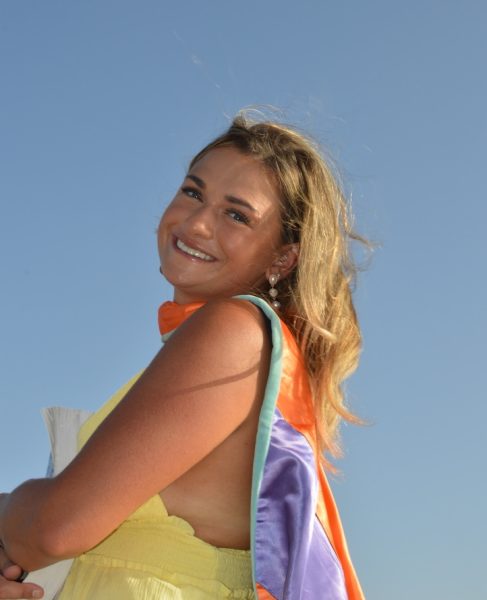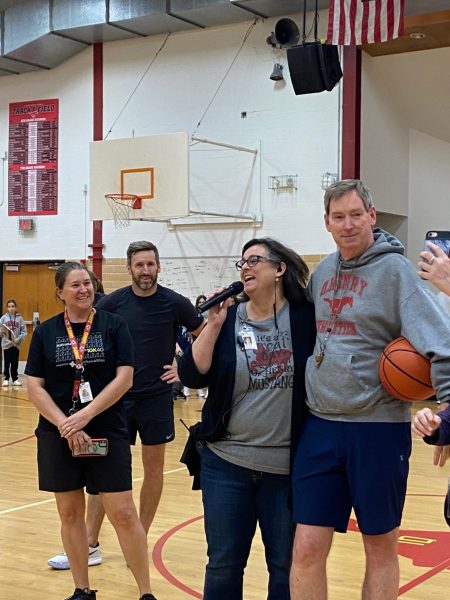Isolation Through The Eyes of An Artist: An Interview With Gabe Langholtz
October 2021 – Quarantine. We all are familiar with it. That feeling of sweet isolation for some, and the awful feeling of being trapped within your own home. The world that we live in can be cruel and filled with blank spots. Gabe Langholtz himself has been isolated; his artwork flows and represents this society that we stand in right now and how the dark could be seen with a light touch. Langholtz was born in Okinawa, Japan, though moved a lot due to his parents being in the military. He was mainly raised in Abilene, Texas.
His artwork has been showcased on television, and he focuses on shapes, people, and objects in his work. Today, I interviewed him on his artist career.
Q: When did you begin your career in painting?
A: It started when I had toddlers. My original passion for art was as a writer, which later became songwriting. It is what brought me to Austin. I played in bands on 6th Street, and when I had kids, I needed to come back home and not go out all night. Then I quit doing anything artistic for a while. Eventually, my daughters got old enough to start painting, and I was doing that alongside them. The artist in me then started getting into it, and by the time they were done, I was still painting with their supplies. I had found something I liked and enjoyed.
Q: Can you name some artists that have inspired you, and why?
A: I tend to get inspiration from several artists. I will talk about two or three. The first person that I get inspiration from is someone named Agnes Martin. She does really organized, geometric and abstract paintings. It is like there is nothing to them, and I find them calm, almost meditative. It is nothing that I originally had in mind for what I thought art was before I saw her work. I get a different feeling from her work than other people; there is just something about it. Another person would be Philip Guston; he was an artist that I couldn’t understand for a long time. I knew he was big, I knew people adored him, and his art didn’t click to me for a long time. I don’t know what it was, but one day, everything just made sense, and he is probably now my favorite artist. There was just a twist in my mind on who he is, and he means something to me because I imagine that maybe, someday, my art could do the same for someone else.
Q: How has your artwork evolved over the years?
A: I would say the most transparent example would be that I went from being an abstract painter to a representational painter. I started abstract because I wasn’t much of a draftsman. I couldn’t draw, and I’m still kind of bad at it. What I learned is that I quickly got bored of abstract art; I just didn’t have any ideas or know what to do. I felt stuck and there wasn’t anything that made my art unique from other abstract painters. I eventually started trying to paint objects and things that were recognizable. It led to a narrative type of work where the objects paired together to tell a story. Once I hit that narrative work, it resonated back to when I used to do songwriting.
Q: What have you learned about yourself from the patterns and objects you create?
A: Yeah, I think I am a very isolated person. I think I learned that through looking at my art and through discussions. I think what I am learning about myself is that there is an emptiness in a lot of my work. It reflects a time in my life where there was just a big void. I didn’t realize it was represented in so much of my work; it’s an emotion that I have translated into art. It is a subconscious thing that I’m not aware that I’m doing.
Q: How do you connect two or more of your pieces, involving a man, crouched, and sitting in a certain position?
A: Heh, yeah, those are funny. It started with “Can I paint a person?” Not with realism, just can I paint a figure that looks sort of like myself. I didn’t really know how to build a series, and I was like, “Can I build a series?” The first one was a small piece, a 12×12, and the next one was an upscaled version. In the first one he has a Band-Aid, and in the second he has a cap and finger braids. The theme was heard, and I was thinking about society being hurt. I started theorizing, “How could I use the same figure, in the same position, where nothing changes, but the story and narrative changes.” Going back to the objects. Basically, have it be the same, but be different at the same time.
Q: How is your art style symbolic to you?
A: I don’t know, I think it is a reaction to the environment and the society that we live in. I definitely think it is humorous, and if I were a writer, I would probably be a satirist. I am serious about it; though the artwork itself doesn’t take itself too seriously. It is mainly focusing on the world because it’s a really dark place sometimes. It is crazy all the stuff we go through all the time. Like right now, in this weird pandemic. I never thought I’d see something like that in my life, now we’re two years into it.
Q: Perspective and view has been shown to be a key part in your artwork. How does that frame the story?
A: Well, I don’t really try to create realism. Behind it, I do go over serious and adult type subjects, but I do it from a naïve childlike perspective. That is how I feel all the time; I feel like I am naïve to the kind of world that we live in. The visual voice is my naivety, and then the content is what we live in and how gloomy the world really is.
Q: You happened to focus a lot on geometric patterns. What do certain colors mean to you?
A: I don’t really know if they mean anything to me, or if I have thought about it that way. When I’ve been learning, and most artists know this, the colors that you use can totally change the way something feels. I didn’t learn that until I started changing my painting. I would just decide something about it, so I would just change the background, and, all of a sudden, the painting would have a different feeling. Now you can never get the color right the first time, even though colors are interesting and they can change the way the viewer feels. It could feel light hearted or dark. There was one of those crouched man paintings that I had where he was eating a Hershey bar; it is a colorful painting. though the scene is at night. I never knew you could make a bright painting set at that time of day.
Q: When did you know you wanted to become an artist?
A: That is a good question. I have always gravitated toward creative things, and music got boring to me. When you are in a successful band, you play quite a bit. When people like your music, they want to hear the same song every time you play. It got repetitive, and I didn’t even enjoy the song I wrote. Something I learned about painting is that it’s fresh, and no one is telling me to make the exact same painting. To me that is what made me fall in love with visual art over music. To me as a person, I have to be doing something creative. That is my driving force.
Q: What advice would you give to others striving to make art?
A: I would think that the best thing you could do would be to just keep going. The worst thing is not pushing anything forward, and sometimes it takes a while to make great work. You are probably gonna make a lot of mistakes before you make anything great. I don’t think that’s just beginners; I think that is all of us all the time. The work that you see by people that you are familiar with, famous artists, are highly curated and each artist has a lot of work that is not as good as the pieces you are familiar with. It’s like the Instagram lifestyle where everyone looks like they have a perfect life. Don’t judge yourself by your bad work; you don’t judge your idols by THEIR bad work. If you aren’t risking to experiment and make bad things, you are never going to grow or discover new things.

